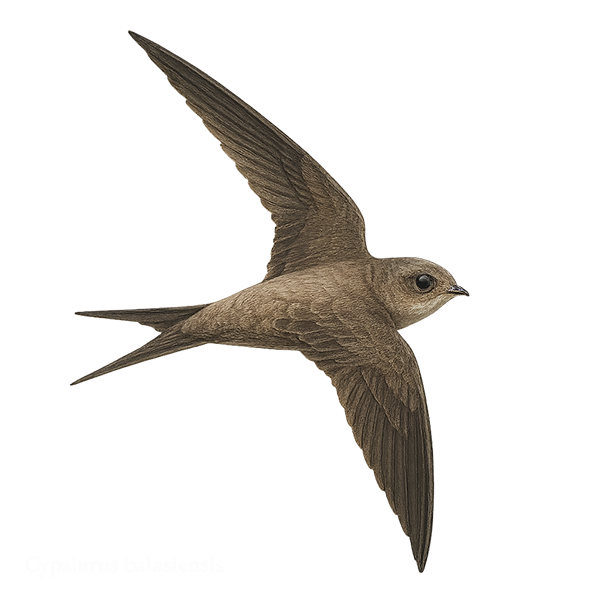Your wildlife photography guide.
Explore the asian palm swift in detail, study its behavior, prepare your shots.
Where to observe and photograph the asian palm swift in the wild
Learn where and when to spot the asian palm swift in the wild, how to identify the species based on distinctive features, and what natural environments it inhabits. The WildlifePhotographer app offers tailored photography tips that reflect the asian palm swift’s behavior, helping you capture better wildlife images. Explore the full species profile for key information including description, habitat, active periods, and approach techniques.
Asian Palm Swift
Scientific name: Cypsiurus balasiensis

IUCN Status: Least Concern
Family: APODIDAE
Group: Birds
Sensitivity to human approach: Suspicious
Minimum approach distance: 10 m
Courtship display: April to May
Incubation: 18-20 jours
Hatchings: April to June
Habitat:
Open forests, palm plantations, agricultural areas
Activity period :
Primarily active during the day, with peak activity in the morning and late afternoon.
Identification and description:
The Asian Palm Swift, Cypsiurus balasiensis, is a small, elegant bird commonly found in the tropical regions of South and Southeast Asia. It is easily recognizable by its brownish-grey plumage and forked tail. This swift is particularly adapted to life in open areas, often near palm trees, where it builds its nest using plant materials glued with its saliva. It primarily feeds on insects caught in flight, showcasing remarkable agility. Its swift and graceful flight is a fascinating sight. Although often in motion, it can be seen resting on tree branches or power lines.
Recommended lens:
400 mm – adjust based on distance, desired framing (portrait or habitat), and approach conditions.
Photography tips:
To photograph the Asian Palm Swift, it is advisable to use a telephoto lens of at least 400mm to capture detailed images without disturbing the bird. Look for areas where swifts are active, such as near palm trees or open fields. Be patient and wait for them to briefly perch on branches or power lines to get sharp shots. Morning or afternoon light is ideal for highlighting their delicate plumage.
The WildlifePhotographer App is coming soon!
Be the first to explore the best nature spots, track rutting seasons, log your observations, and observe more wildlife.
Already 1 439 wildlife lovers subscribed worldwide

